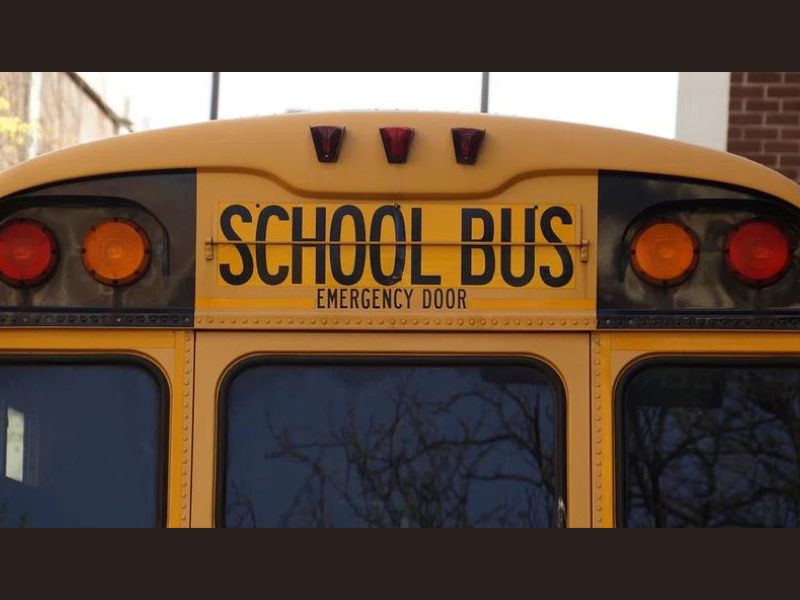Ashish Chaturvedi, Founder, School Diary
While we often talk about celebrating children on Children’s Day, are we truly prioritizing their safety? Every year, road crashes claim 1.35 million lives globally, with India unfortunately leading in road accident fatalities, as reported by the World Economic Forum. With around 330 million children commuting to school daily in India, the risks they face on the road are staggering. A study by the Save Life Foundation reveals that nearly one-third of these children travel by school bus, 12% by school van, and 11% on foot, underscoring the urgent need to make their journeys safer.
Parents are getting increasingly concerned and weary about the safety of their children during school transit, and expect it to be safe, reliable, and punctual. They seek assurance that the transportation provided is offering the highest levels of safety, comfort, and efficiency, with concerns being addressed promptly and effectively. Schools have a responsibility to inform parents about transportation services, including schedules, routes, and any disruptions. Moreover, clear and effective communication channels must be in place for parents to raise concerns or questions about transportation.
While guidelines by the Supreme Court of India and the Central Board of Secondary Education (CBSE) are crucial, they often emphasize on emotional safety and the overall well-being of students within school premises. However, there remains an urgent need to prioritize the physical safety of children during their commutes.
Leveraging cutting edge technologies
Advancements in intelligent systems technology have revolutionized school transportation, enhancing safety, efficiency, and convenience. On this front, a key development is the implementation of GPS-based tracking and real-time monitoring systems.
These systems allow parents and school officials to track buses’ precise locations throughout the day, providing real-time updates on bus status and estimated arrival times. They also optimize routes and schedules by analyzing data on pick-up and drop-off locations, traffic patterns, and other factors, reducing travel time.
IoT technology, such as Global Positioning System (GPS), Global System for Mobile Communication (GSM), and Radio Frequency Identification (RFID), has significantly enhanced school bus tracking and safety. In states like Madhya Pradesh, the Indian Government mandates AIS 140 devices for vehicle safety, providing GPS tracking, emergency buttons, and real-time monitoring of bus location, speed, and driver behaviour. These devices require specific SIM cards and BSNL recharges to operate.
Service providers must integrate AIS 140 devices into their platforms, combining real-time data with route planning tools for better data-driven decisions. These platforms should also comply with government regulations.
Here are 5 ways schools can enhance child safety during transit:
Driver behaviour monitoring
Unsafe driving behaviours like speeding and sudden braking also pose a high risk, leading to discomfort and stress for students, which not only ruin a school’s reputation, but also negatively impact students’ well-being. Monitoring driver behaviour is crucial for addressing these issues proactively. Advanced driving behaviour monitoring software, equipped with on and off-road facing cameras, helps schools track metrics such as sharp speeds, sudden acceleration or braking, and deviations from safe zones. This technology generates safety scorecards that identify at-risk drivers, facilitates disciplinary actions, and provides real-time alerts for violations or accidents.
Attendance and dispersal management solutions
Managing student attendance and ensuring no child is left behind during bus rides is a daily challenge. Comprehensive systems now combine automatic methods, such as bluetooth readers, cards, and RFID technology, with manual checks via mobile apps. These systems ensure accurate tracking when boarding and disembarking. Additionally, dispersal management features cross-reference attendance data with departure records to guarantee that all students who arrive at school in the morning leave safely in the afternoon.
Efficient route planning
Modern one-click route planning tools make this process easier by simplifying bus routes to save time and reduce distance. With this, schools can lower fuel use, cut costs, and reduce traffic around school areas. These smart tools help schools figure out how many buses are needed to meet student demand. This approach is especially helpful for schools that hire external transportation services, as it allows them to make better decisions based on system recommendations instead of vendor estimates.
Additionally, routing software with GPS and real-time tracking also boosts safety and efficiency, letting schools quickly adjust to changes in student numbers, traffic, and other factors.
Enhancing parental convenience with nearby reminders
To accommodate busy parents, features that send nearby reminders help reduce waiting times at bus stops. This innovation allows parents to time their arrivals accurately, thereby avoiding waiting and time and reducing stress.
Unplanned and ad-hoc trips
This can pose challenges for schools and parents, introducing uncertainties and potential risks. Advanced tracking systems now monitor these journeys with the same rigor as regular routes, ensuring consistent safety measures. These systems provide real-time updates on the bus’s location and status during unexpected trips, helping to manage changes effectively and address any issues promptly. This added layer of safety ensures that students are protected throughout their journey, regardless of whether it’s a regular route or an ad-hoc situation.
This Children’s Day, as we celebrate the joy and potential of every child, let’s also commit to enhancing their safety. With features like ad-hoc trip tracking and parental reminders, schools can proactively address transit issues, easing concerns for parents, teachers and students. As technology continues to advance, these innovations will remain key to providing a safer and more efficient transportation experience for students.
Also read: Goa: School bus overturns resulting in injuries to 14 students
